Everything you need to know about the Volkswagen Golf GTE
This week Chris borrows a VW Golf GTE, the plug-in hybrid variant of the Golf 8. Chris talks us through his experiences and addresses common concerns of those considering purchasing or running a hybrid vehicle as their next car.
Introducing the Golf GTE
The Golf 8 GTE combines the power and driving dynamics of a Golf GTI with the efficiency of a plug-in hybrid. Featuring a near silent electric motor and a 1.4L TSI engine which combined produce 245 PS and 400 Nm, allowing the GTE to accelerate from 0-62mph in 6.7 seconds and on to a top speed of 139mph. Where the GTE stands out is that it also offers an electric range of up to 40 miles and over 250mpg.
The GTE has sporty touches inside and out including; blue design elements, chrome plated diffuser, roof spoiler, side skirts, red brake calipers and sports alloy wheels and LED lighting technology. Inside the theme continues with stainless steel pedals, leather sports steering wheel with paddles, LED background lighting and sports seats in blue tartan which nods back to its GTI heritage.
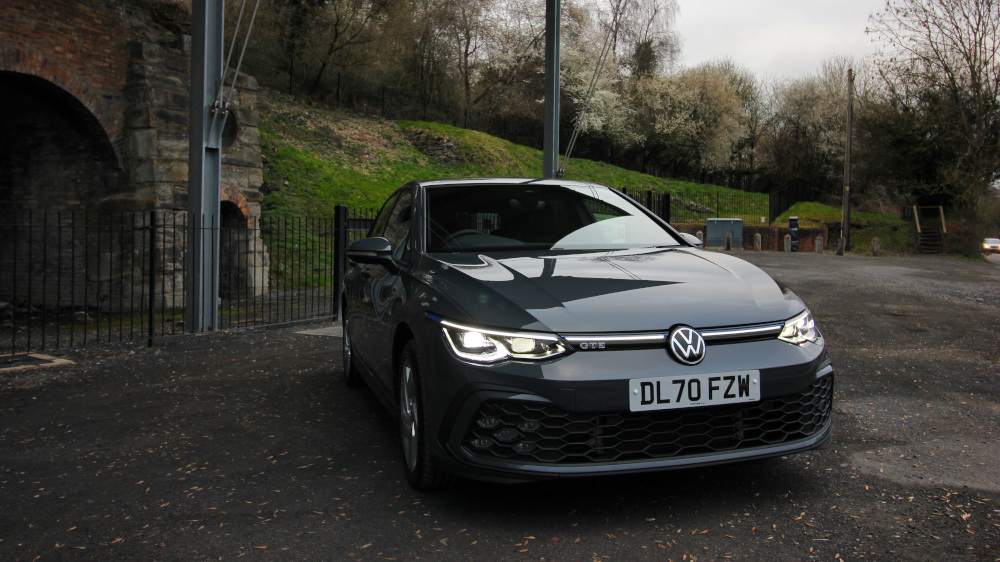

Living with a GTE
The first thing I noticed was the quality, design and weight of the gloss black and chrome key that was handed to me with ‘touch’ sensitive buttons, it was an indication of things to come with the Golf 8 GTE. On unlocking the LED strip light across the front of the car and the door handles illuminated and the door closed with a reassuring thud, traditional Golf values of quality certainly continue in the Golf 8.
The interior was dominated by two screens, one controlling the infotainment and the other display, driver information. Both were highly configurable; the driver’s display had several different views to choose from and it took less than a minute to connect an iPhone to display Apple Carplay.
The GTE defaults to E mode upon start-up which allows for fully electric driving and provides a silent driving experience. E mode has adequate power but above certain speeds and when needing extra power the refined TSI engine steps in to assist. Other than the characteristics of an electric motor the GTE feels like any other performance Golf 8 with reassuring power available, lots of technology and a refined driving experience.
The GTE has a range of driving modes including Eco, Comfort and Sport as well as E and Hybrid modes. These are accessed by a touch sensitive button and selected via the touchscreen.
Upon starting the GTE up, it defaults to fully electric mode which gives up to 40 miles range. Selecting hybrid mode, the Golf will automatically use both power sources to optimise its electric range, reduce fuel consumption and increase performance. It is also possible in this setting to set the car to preserve a certain level of battery charge. The system can also use the sat nav to decide when to use a particular power source and the transition between both is very hard to notice.
Eco reduces the responsiveness of the throttle, reduces the power of the air conditioning and provides eco tips to increase fuel efficiency. Comfort provides a balance and Sport combines the power of both motors, adds weight to the steering, increases the responsiveness and pumps fake engine sounds into the cabin for a dynamic experience.
The sport setting for the gearbox can be easily accessed by flicking the leaver backwards once, this gives quick access and the confidence to overtake or pull out of junctions.
The Golf GTE has a 13 kWh battery with a maximum charging capacity of 3.6kW. Having moved house I had the ability to plug the car in using the 3 pin charger provided, using this you can use a regular socket and the car charges in less than six hours at 2.3kW per hour. Whilst this took a while it did fit in around using the car, by charging in the evening or for an hour here and there to keep it topped up.
The socket to charge the car was located under a flap just above the front, passenger side wheel which needs to be taken into consideration when plugging the car in as you may need to drive in forwards or change where you park to ensure the charger reaches.
If a wallbox was installed this would be reduced to around 3.5 hours.
To charge the car you simply press to open the flap, plug in the charger and status light will change from white to green to show the car is charging. If you lock the car the charger will lock in. To take it out, click unlock on the key and pull out the charger.
We used a public charger at the supermarket whilst the car was parked up whilst doing the weekly shop which seems one of the most intuitive and convenient ways an electric or hybrid car can fit into your life – charging it frequently and for short bursts whilst its parked up and not in use.
All I had to was plug the car in and use the app to confirm the charge, it took less than a minute. Using this charger, from 0% and in cold temperatures the car would take about 3.5 hours to complete a charge. Again, it is probably best to frequently top the battery up whenever possible than leave for hours to charge from 0%. Just like when charging at home the cable locks to the car when you lock the car.
VW Golf GTE FAQ
Charging Process
No you don’t, in fact the quickest charging happens between 20 and 80%, so frequent top ups within this range can be more convenient and preserve battery health.
Fully charging the battery will however give you the maximum range and therefore benefits of the electric motor in a PHEV. The battery is designed to last the lifetime of the car even with frequent charges outside of the 20-80% range.
To charge the GTE you simply open the charging port which looks like a fuel cap but is on the passenger side at the front of the car and either use the charging cable supplied with the car or the charging cable attached to the charging station. Then insert the cable into the car. Follow the instructions on the charging station such as payment instructions and confirmation, then check the car is charging. The status light around the charging port should illuminate green and the dashboard will give a prediction of when the battery will be fully charged.
Lock the car and leave it to charge. When returning simply unlock the car and use the unlock button next to the charging port to remove the cable. If the cable belongs to the car return to the boot.
Some public chargers will use an app which you open to verify the charge and you can then check the charging status remotely whilst you are out and about.
From 20% to 80% charging is most rapid, outside of these charging is slower to protect the battery. Other factors also affect the charging rate such as – temperature (colder temperatures slow charging rate), the charging rate and the size of the battery.
The charge rates from 0% were approx:
• At home with a 3-pin plug, 6 hours to charge.
• Home wallbox, 3.5 hours.
• 7kW Public charger, 3.5 hours.
• 22kW Public charger, 3.5 hours.
The GTE’s maximum charging capacity is 3.6kW per hour so even though there are faster public chargers the Golf is unable to charge any quicker.
I found in my experience charging from 0% and in cold temperatures that at home using a 3-pin plug it could take up to 6 hours to charge and at a public charger it took about 3.5 hours. As soon as you plug the GTE the dashboard predicts how long a full charge will take.
At home to work out how much it will cost to charge your car, check the battery’s capacity and your electricity rate. For the GTE this is 13kWh and for myself 15p per kwh. 0.15x13 = £1.95 for a range of up to 44 miles. This means for me a full charge costs £1.95 and when driving on electric in optimal conditions each mile costs 5p. Whilst everyone’s individual situation will influence the cost. This is still a large cost saving compared to a regular petrol car such as a Golf 1.5L TSI which costs approx. 10p per mile.
At a public charger the costs can vary. Some are free for customers such as Pod-Points at Tesco. Whereas others can cost money, using apps such as Pod-Point and Zap-Map you can see nearby chargers, if they are available and how much they cost. Quite a common cost for public chargers was 30p per kWh or a flat rate connection fee often around £1 then free after. The rapid chargers I found at service stations also cost around 35p per kWh which whilst costing more than at home is quicker to charge and still costs less than running a combustion engine car.
It may not be possible to have a home charger installed at home due to reasons such as not having off-road parking, renting or not having parking close enough to your home.
In these situations it is still possible to run an electric car, especially a PHEV like the GTE. It is most convenient to charge an electric car where it is parked (which is almost 95% of the time for a car) and using chargepoints at these locations. For most people this is at home but other frequent destinations may also have chargepoints such as work, shopping centres and leisure centres. Then less frequent longer journeys can benefit from on-route rapid chargers found at service stations.
Workplace charging and charging as part of a commute such as at a train station car park, in more normal times in particular serves as a good opportunity for people who cannot charge at home. As people often spend over 8 hours at work which is plenty of time to fully charge the car and most people’s commutes are less than 30 miles. I know that with my commute of 15 miles and using the charger at work, I could commute everyday of the week in a GTE and not use the petrol engine once.
The GTE uses a Type 2 Connector, this can be used at home, work or any public charging station. The maximum AC the car can charge at is 3.6kW.
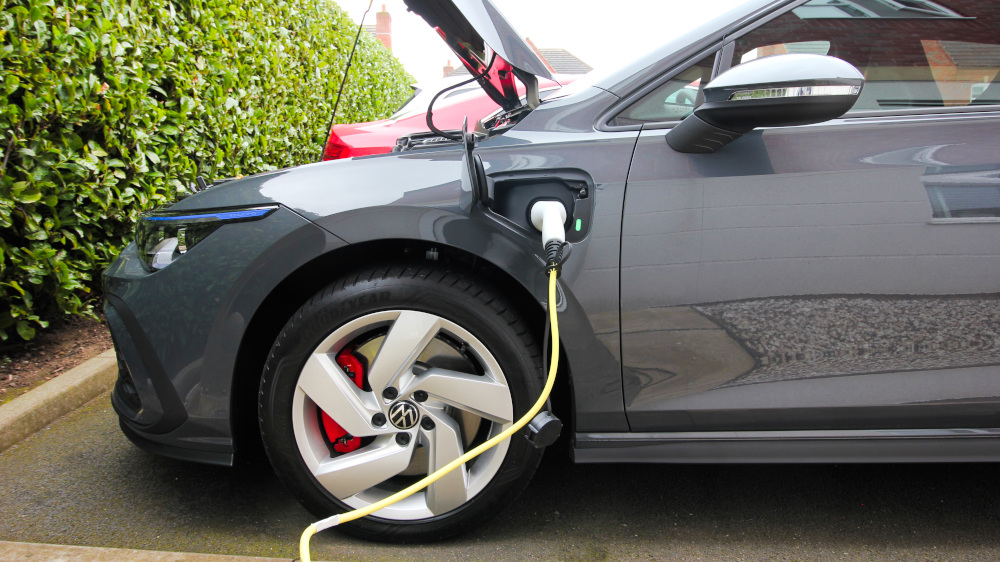
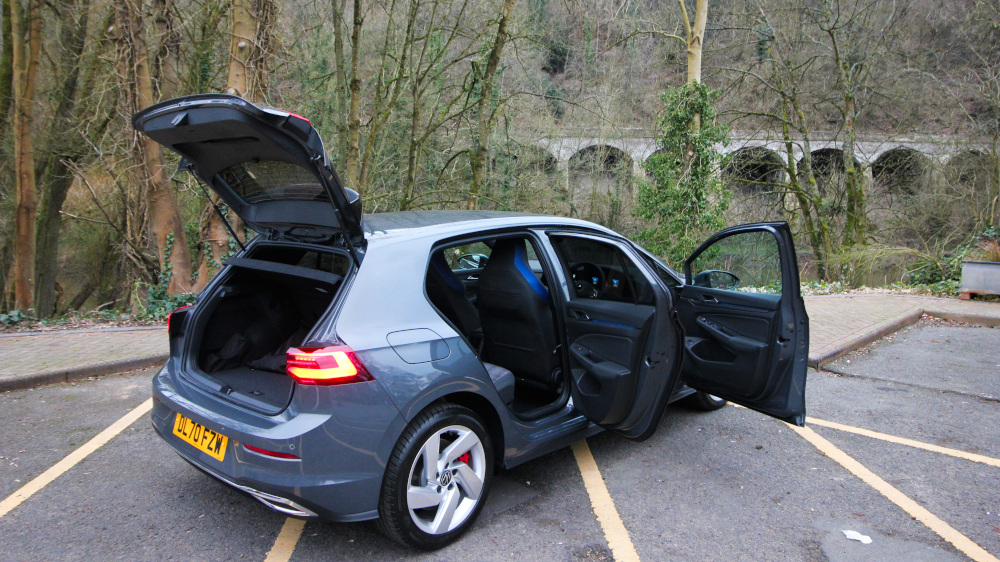
Golf vs GTE
The GTE should have very similar servicing costs which are likely to be lower than a conventional Golf GTI. This is because components such as the brake pads and discs receive less use due to the regen braking of the electric motor so wear out slower and need replacing less frequently. The 1.4l TSI has a smaller capacity so requires less oil and the hybrid element of the car should need little maintenance due the lower number of moving parts. Therefore, GTE servicing is likely to cost a similar amount to a regular Golf.
VW also offers service plans to spread the cost of servicing with small monthly payments.
The overall driving experience is similar to any other performance Golf, with an electronic differential which provides greater cornering traction, punchy acceleration in Sport mode and fake noise pumped into the cabin and instant torque available from the electric motor, the GTE provides a thrilling driving experience. Boost mode uses both motors to their full potential to provide maximum power for acceleration, overtaking and pulling out of junctions. Yet when running in E mode the silence provides a calming sensation giving the GTE two characters.
The regen braking and predictive braking can take a little bit of time to get used to, but after an hour or so I was used to driving it and almost never needed to touch the brake pedal and enjoyed seeing the battery recharging from what is otherwise wasted energy.
The GTE looks and on the whole drives like any other performance Golf, with the added benefits provided from the electric motor to give it an edge.
The Golf GTE offered impressive real-world efficiency, whilst achieving over 250mpg is difficult unless running almost completely on electric and only doing short trips. I still managed over 90mpg consistently without adapting my driving style, climate control or regularly charging the battery.
When the battery ran out the car could still coast with the engine off and over 40mpg was achievable due to the size of the petrol engine. The battery was also recharged by the engine and regen braking. Having the possibility of relying on the petrol engine removes any range anxiety.
Purchase, Tax and Grants
The GTE benefits from £0 VED Road Tax in its first year and then £140 for the next four years. The GTE is also London Congestion Zone Charge and Ultra Low Emission Zone exempt, further saving money on running costs.
The low emissions of 26g/km and electric range of over 40 miles means the GTE also benefits company car drivers with lower BIK rates. The 40 mile range means 6% BIK, whereas if the range was less than 40 miles this would be 10%. Whereas, a petrol powered Golf would have BIK rate of 33%, so the GTE offers a large saving for company car drivers.
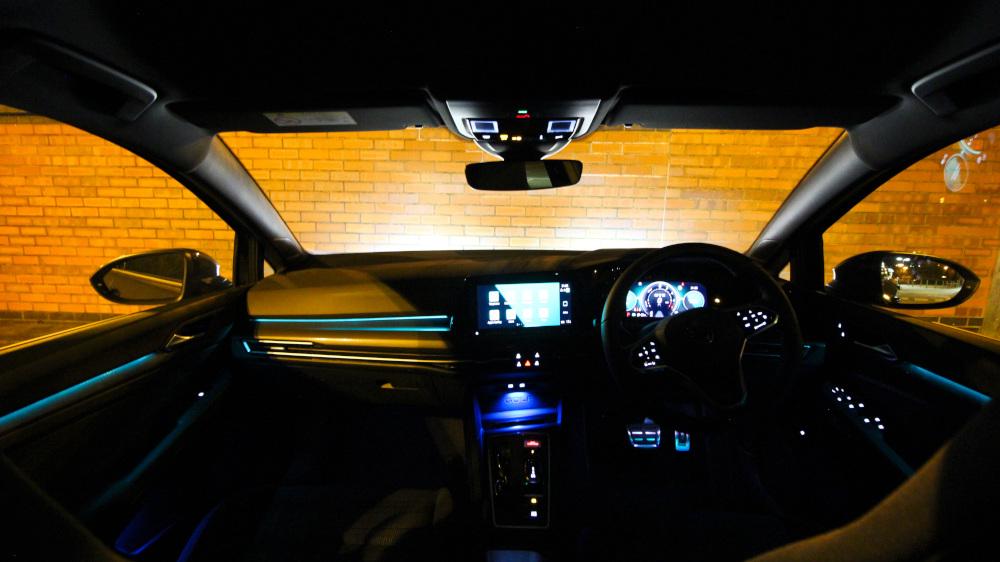

Technology
The Golf GTE is a showcase of LED technology with exterior background lighting which includes illuminated door handle recesses, a light strip on the radiator grille and light projections. Whilst the LED fog lights come as a 10 individuals lights built into the honeycomb grille and add another striking design element to the GTE.
The GTE comes as standard with IQ.LIGHTS which are normally a £1750 cost option. These include LED dot matrix headlights which can be individually controlled to illuminate as much as the road as possible without dazzling other road users. The technology uses a front camera, GPS data, steering angle and speed information to activate individual LEDS in fractions of a second. Each headlight has a total of 128 LEDs.
Other benefits include the concerning function, dynamic animated indicators and LED tail lights.
The new Golf 8 demonstrates the latest in car technology and connectivity.
The interior has two displays which are 10” and 10.25”. The digital cockpit displays classic information such as revs and speed but can be configured with several views to display other information and GTE specific info such as battery status and remaining range. The central touchscreen can be configured like a smartphone to display favourite functions how you want them.
Almost everything is controlled by touch sensitive surfaces such as the radio, climate control and lighting which can take some time to get used to and be fiddly on the move. But after a few days and if you use Apple Carplay/Android Auto it can easy enough to use.
The Golf 8 comes with a range of Driver Assistance systems including Adaptive Cruise Control and Park Assist. The Golf can keep the car in lane and accelerate and decelerate in traffic to make driving less tiring.
Car2X communicates wirelessly with other Car2X enabled vehicles on the road to provide up to date traffic information in real time and can ready the car’s systems such as Adaptive Cruise Control for upcoming traffic situations.
The regenerative braking felt less intrusive than in other hybrid cars I have driven but this also felt like less energy was being recuperated. Regenerative braking uses the electric motor to add resistance to slow the car, the energy created is stored in the battery. The GTE adjusts the amount of regen automatically by analysing the car’s surroundings, looking at relative speeds of cars ahead, changes in speed limits, hills, upcoming bends and junctions.
The system felt natural in the GTE, as the car slowed down gradually replicating the effect of engine braking in a conventional car and the system did manage on a downhill stretch of a road to top up the battery by 2%. So the technology does have an impact over distance.
PHEV vs Electric
GTE or an ID.3
Plug-in-hybrid (PHEV) cars offer the perfect compromise between combustion engine cars and all electric, combining performance, efficiency and range.
Benefits include:- Lower emissions - PHEV can be driven in pure electric mode to drive without producing any emissions. PHEV can drive with up to 55% lower emissions overall compared to a petrol car.
- Cheaper to run - PHEV cars can achieve higher MPG and produce lower emissions than a conventional car so fuel and tax costs are lower.
- Long range compared to pure electric - PHEV cars have the benefit of using petrol or diesel so can be quickly refueled and store more fuel than a battery for longer range.
- Can recharge themselves whilst driving - PHEV benefit from being plugged in but can also recharge as they drive.
Electric cars are increasingly popular. Despite car sales decreasing by 29.4% in 2020, electric car sales in 2020 were up by 185.9% compared to 2019.
Running an electric car has many benefits:
- Cheaper to run - recharging an EV is 58% cheaper than refueling a petrol car.
- Cheaper to maintain and more reliable - fewer moving parts means servicing is cheaper as there are less parts to wear out.
- Better for the environment - whilst driving an electric car emits no emissions, using renewable energy to charge reduces your carbon footprint further.
- Driving Dynamics - instant torque from standstill ensures a more responsive driving experience.
- UK Government's Plug-in Car Grant - government support can make buying an electric car more cost effective than a petrol car.
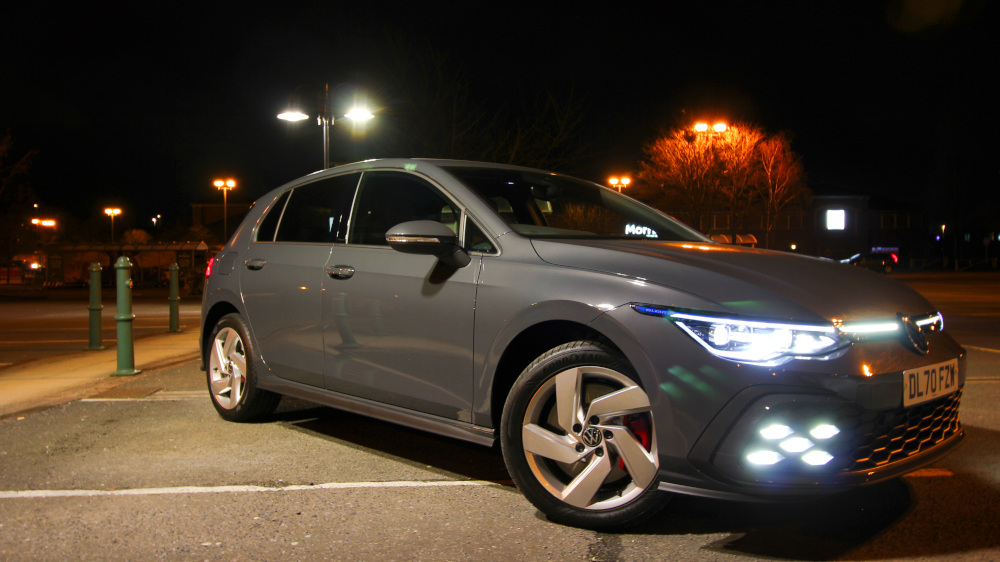
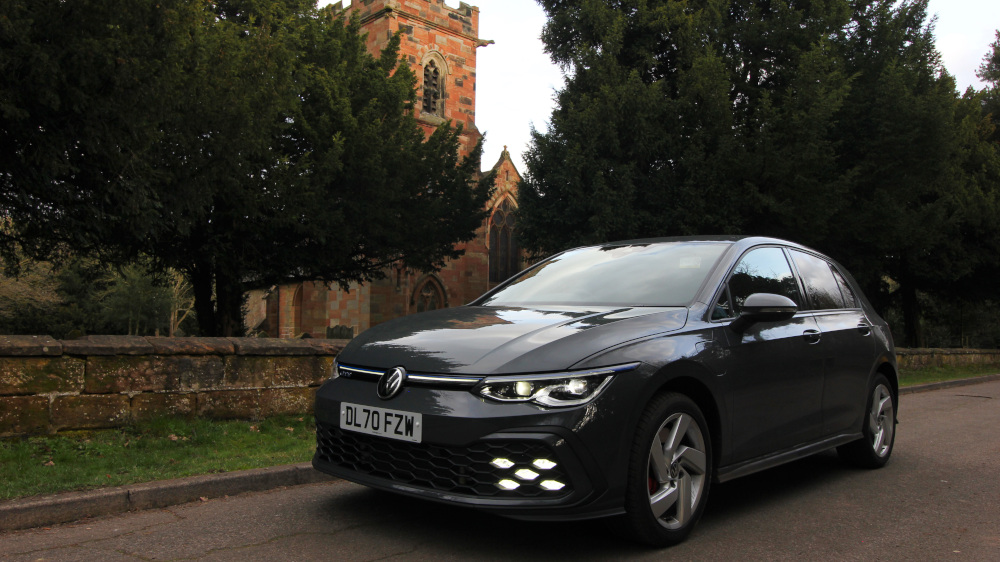
Summary
In summary the Golf GTE was impressive, with its versatile mix of performance and economy which gave it a dual personality. The technology on offer is useful and adds to the overall experience but does take time to get used to.
But the potential for over 40 miles on pure electric and an achievable mpg of over 100 makes the Golf GTE a brilliant option if you are after a car which has less of an impact on the environment, yet is still powerful and offers a dynamic driving experience.
Enquire now for the latest offers, to ask any questions or to book a test drive.




